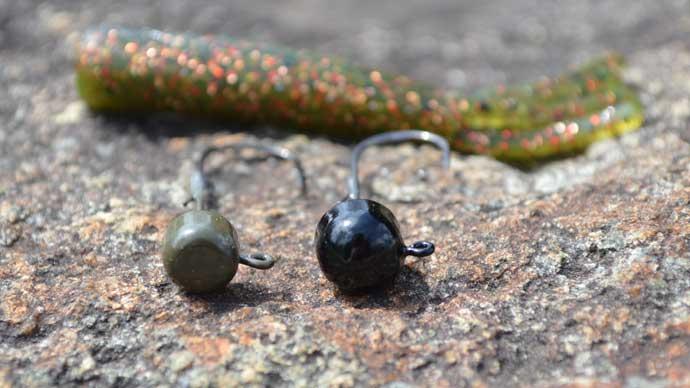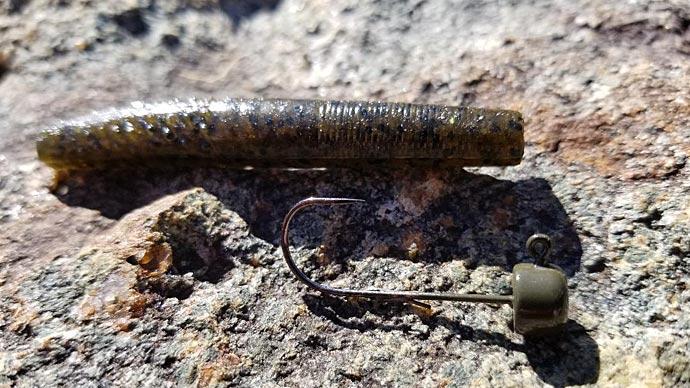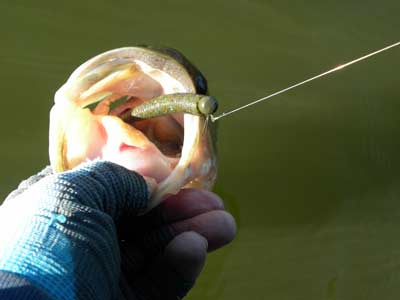
Taking a closer look at bass fishing today, one presentation tactic is dominating bass fishing throughout the country and becoming a significant player on the walleye scene. What is that tactic? A Ned rig. No bass tournament today exists where someone is not catching bass on a Ned rig. So, what makes this presentation so popular and effective simultaneously? It can flat-out catch bass more often than anyone ever thought. Let’s break down some of the things you need to know about and what you need to stock when it comes to today’s Ned fishing.
What Is Behind The Ned’s Efficiency
The biggest question is, what is behind Ned's popularity today? It’s a few things when you are talking Ned rigs. Looking back, let’s set some groundwork for today’s Ned tactics. Back in the 80s, up in Minnesota, a local tackle company made spinnerbaits and buzzbaits stocked in smaller sporting goods stores and local bait shops. The company's name was Gopher Tackle, and the gentleman running this company was Connie Peterson. One of the things that Gopher Tackle made was a jig head designed by Connie called a Mushroom Jig Head. It was extremely popular with local bass guys, who would buy these jigs at local tournament meetings by the hundreds. What we were doing at the time was pairing the mushroom jig head with a 4" ringworm. This was a Minnesota bass staple and still is today.
The popular setup back then was a 6 to 6 1/2ft medium action spinning rod teamed with an ABU Garcia C3 Cardinal spinning reel spooled with a 6lb to 8lb monofilament line. That was the top finesse setup—before it was called finesse fishing. Many anglers used this tactic to put bass in the boat when the bite was super tough on the deep, natural, clear-water lakes in the Upper Midwest.
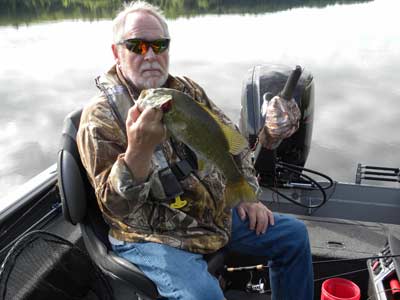
Ned Khede, at that time, had ties with In-Fisherman. He was doing some work for them, and one time when he came up to fish walleyes on Mille Lacs with Ron Linder. Ron gave Ned some 1/16oz Gopher Mushroom Jig Heads. Ned later paired this mushroom jig head with a small plastic worm, and the start of the Ned Rig unannounced to anyone was born. Through the years, Ned has modified his early setup to what it is today. With the popularity of bass fishing and the finesse movement, the Ned Rig is a force in today’s bass fishing.
So, you ask, is the Ned rig's popularity caused by today's added fishing pressure that bass fishing has created, or is the Ned rig imitating a bait situation that the bass have been targeting for years between craws and small baitfish that live on the bottom of our waters? No one has answered that question. In my case, I am not questioning the reason; I’m just running with the answer: Join 'em and, get in on the game, take advantage of the Ned rig bite.
Today’s Ned Set Up
When we fast forward to today, some things have changed through the years, and others have stayed the same in the new realm. Mushroom jigs still exist through various outlets. I make my Ned jigs. I currently make Do It Worm Nose Jig, Midwest Finesse Jig, and Weedless Midwest jigs to round out my stock of Ned jigs.
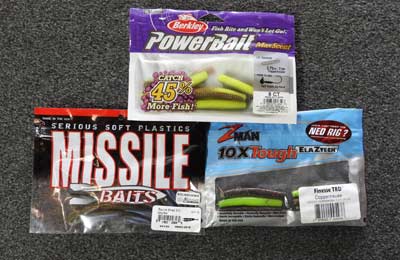
When it comes to baits, this category is wide open. All the major plastic companies have their version of a new bait made from traditional plastic makeup. These traditional plastics have salt added to make them have a slow sink. Other companies are making new Ned baits from different versions of plastics. Elaztech is one version; the others are TPE (Thermoplastic Elastomer) and PVC Plastisol. The characteristic of Elaztech and other plastics is that these baits don’t tear like traditional plastics, and they all have a floating quality. Rig these plastics on a jig head, and your chances are good that these baits will sit on the bottom tail up. It’s a characteristic that I key in on. I have had remarkable success using these two (traditional vs. Elaztech) against each other. When it comes to bites, let the bass decide what they want. I will also do the same with jig heads. I will have one rigged within arm’s reach that I cycle through before I leave an area where I’m getting bites.
One more thing has changed: fishing today. Other than the expanded baits, it is the line that we are all using. Braid has been instrumental in putting the finesse category of bass fishing on the map. Yes, its predecessor, fluorocarbon, was an improvement over monofilament, but it had more of a minor impact compared to what braid has. When you use braid and fluorocarbon together like many of us do in today’s finesse fishing, you have the best to detect the lightest bites that happen in all conditions.
As good as braid and fluorocarbon are together, you may want to put a little buffer into the mix if the bass are fussy that day, dropping your bait before you can hook them. In these cases, I will change out fluorocarbon for monofilament. I will introduce a line at the end of my braid to give me a little added stretch that I’m looking for to get the bass to hold onto my bait just a little bit longer to get a hook into them.
Take The Next Step: Expand Your Baits
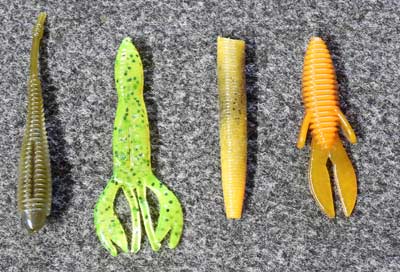
The key to expanding your Ned fishing is to have more baits than just Ned worms. Expand into craws, small tubes, and flukes, to mention a few. By offering different shapes, you’re giving the bass a different look from what many other fishermen do today. Many other anglers are hung up on providing the bass with a new worm option. Expanding your baits will open your bite window, triggering more takers. This will set you apart from the other fishermen, creating better success on your day of fishing.
As noted before, play with different bait materials, as each can differ in how they fall through the water column and sit on the bottom. Jig head size will also influence how your bait moves along the bottom and if it can stand up.
Regarding jig size, use the most negligible weight you can get according to the conditions you face on the water that day. If you overpower your jig all the time, you may get fewer bites than when you can dare the bass to bite instead of react to biting. The best way to measure this is to use both ends of the spectrum to see what triggers bites that day on the water. In my experience, bass will, most of the time, prefer one action over the other.
Ned Equipment Setups
Pick what feels comfortable for you and your fishing when choosing your equipment. Rod length can vary from 7ft to 7'6", medium light to medium. The reel size is 200 to 300. The line choice for today's fishing is braid. Braided line has changed how we finesse fish today. We can upsize line choice but still fish a smaller diameter line than you have before when you use braid. This sets today's finesse fishing apart from 10 to 12 years ago. Back then, it was 8lb to 10lb fluorocarbon or monofilament as your line choice. You had lighter hook sets for fear of breaking the line, and you also had to work at keeping the bass out of the cover for fear of breaking off. Today, you can fish a 15lb braid the same diameter as a 6lb test line. You get better, cleaner hook penetration due to the limited stretch with braid.
Many of us use fluorocarbon when it comes to a leader choice; my number one choice is Sunline 10lb FC Leader. If the bass are finicky that day, I have been known to go to a 10lb Sunline mono leader. This move will add a little stretch to my setup. This can be the answer when the bass get pressured and are bite-weary, sometimes dropping the bait before you can set the hook. Also, ensure that you have a straight fluorocarbon setup in your rod box; this has saved me a few times through the season from time to time in super tough bite situations. Straight fluorocarbon will have more stretch than a braid, allowing you to feel the bass still and get a chance to get a solid hook into them before they can drop your bait.
I hope this will help you get your Ned fishing off on the right foot. The more you can keep up with the trends in Ned fishing and incorporate new baits into your mix, the more successful you will be. Give the bass baits that they have not seen before, as this will allow you to stay ahead of the curve and excel in what you can get over the side of your boat.


